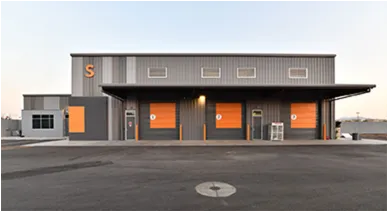- Afrikaans
- Albanian
- Amharic
- Arabic
- Armenian
- Azerbaijani
- Basque
- Belarusian
- Bengali
- Bosnian
- Bulgarian
- Catalan
- Cebuano
- Corsican
- Croatian
- Czech
- Danish
- Dutch
- English
- Esperanto
- Estonian
- Finnish
- French
- Frisian
- Galician
- Georgian
- German
- Greek
- Gujarati
- Haitian Creole
- hausa
- hawaiian
- Hebrew
- Hindi
- Miao
- Hungarian
- Icelandic
- igbo
- Indonesian
- irish
- Italian
- Japanese
- Javanese
- Kannada
- kazakh
- Khmer
- Rwandese
- Korean
- Kurdish
- Kyrgyz
- Lao
- Latin
- Latvian
- Lithuanian
- Luxembourgish
- Macedonian
- Malgashi
- Malay
- Malayalam
- Maltese
- Maori
- Marathi
- Mongolian
- Myanmar
- Nepali
- Norwegian
- Norwegian
- Occitan
- Pashto
- Persian
- Polish
- Portuguese
- Punjabi
- Romanian
- Russian
- Samoan
- Scottish Gaelic
- Serbian
- Sesotho
- Shona
- Sindhi
- Sinhala
- Slovak
- Slovenian
- Somali
- Spanish
- Sundanese
- Swahili
- Swedish
- Tagalog
- Tajik
- Tamil
- Tatar
- Telugu
- Thai
- Turkish
- Turkmen
- Ukrainian
- Urdu
- Uighur
- Uzbek
- Vietnamese
- Welsh
- Bantu
- Yiddish
- Yoruba
- Zulu
Nov . 18, 2024 10:07 Back to list
Building Steel Design An Essential Aspect of Modern Architecture
Steel has emerged as one of the most significant materials in the field of construction, primarily due to its remarkable properties, which include high strength, durability, and versatility. The design of steel structures is fundamental in ensuring not only the aesthetic appeal of buildings but also their safety and functionality. This article delves into the intricacies of building steel design, highlighting its importance, key principles, and contemporary applications in architecture.
Understanding Steel and Its Properties
Steel is an alloy primarily composed of iron and carbon, which endows it with exceptional mechanical properties. These include high tensile strength, corrosion resistance, and the ability to withstand extreme environmental conditions. One of the most notable features of steel is its favorable strength-to-weight ratio. This property allows architects and structural engineers to create lightweight structures capable of supporting heavy loads, a significant advantage in high-rise construction.
The Process of Steel Design
Building steel design involves several critical stages, including conceptual design, detailing, and execution. Initially, architects draft a concept that aligns with the functional requirements and aesthetic goals of the project. This phase includes considering the building’s purpose, the load it will bear, and the environmental forces it must withstand, such as wind and seismic activity.
Once the conceptual design is established, structural engineers take over to ensure that the design complies with safety standards and local building codes. This stage involves detailed calculations and the use of software tools to analyze the structural integrity of the proposed design. Engineers consider various factors, such as static and dynamic loads, to optimize the design for safety and efficiency.
Key Design Principles
Several fundamental principles guide building steel design
1. Load-Bearing Capacity The structure must be designed to support all anticipated loads without excessive deflection or failure. This includes considering dead loads (permanent fixtures), live loads (temporary loads such as occupants and furniture), and environmental loads (wind, snow, and seismic forces).
building steel design

2. Sustainability More recently, sustainability has become a primary focus in building steel design. Designers are exploring how to minimize the environmental impact of their structures, including the use of recycled steel and energy-efficient construction methods.
3. Aesthetics and Functionality A well-designed steel structure should not only be functional but also visually appealing. The integration of steel into architectural designs allows for creative expression, such as utilizing exposed steel beams and modern facades.
4. Connectivity and Joint Design The way components connect is crucial to maintaining structural integrity. Proper joint design prevents weak points in the structure and facilitates ease of assembly.
Contemporary Applications
Modern architecture has witnessed a surge in innovative steel structures, from iconic skyscrapers to sustainable buildings. Famous examples include the Burj Khalifa in Dubai and the Torre Agbar in Barcelona, which showcase how steel can be used creatively to produce striking shapes and forms.
Moreover, advances in technology have led to increased efficiency in steel fabrication and construction. Building Information Modeling (BIM) allows for better visualization, accurate measurements, and precise planning, reducing wastage and improving timelines.
Challenges and Solutions
Despite its advantages, steel design faces challenges such as the potential for corrosion. Protective coatings and treatment methods are essential to prolong the lifespan of steel in adverse environments. Additionally, the fluctuating prices of steel in the market can impact construction budgets, necessitating careful planning and cost management strategies.
Conclusion
The design of steel structures is a dynamic and essential component of modern architecture. With its combination of strength, versatility, and aesthetic potential, steel will continue to play a crucial role in shaping our built environment. As we advance into the future, the principles of sustainability and innovation will be critical in guiding the development of steel design, ensuring that our structures are both functional and environmentally responsible. Whether as towering skyscrapers or intricate bridges, the role of steel in building design is integral to achieving a progressive and sustainable architectural landscape.
-
How Do Prefabricated Steel Structures Transform Modern Construction?
NewsJul.14,2025
-
How Do Prefabricated Metal Buildings Redefine Modern Construction?
NewsJul.14,2025
-
How Do Prefab Insulated Metal Buildings and Steel Structures Revolutionize Modern Construction?
NewsJul.14,2025
-
How Do Pre - Engineered Steel Structures Redefine Modern Construction?
NewsJul.14,2025
-
Advancing Modular Construction with Prefabricated Metal Structures
NewsJul.14,2025
-
Advancing Industrial Infrastructure with Prefabricated Steel Solutions
NewsJul.14,2025
Products categories
Our Latest News
We have a professional design team and an excellent production and construction team.












